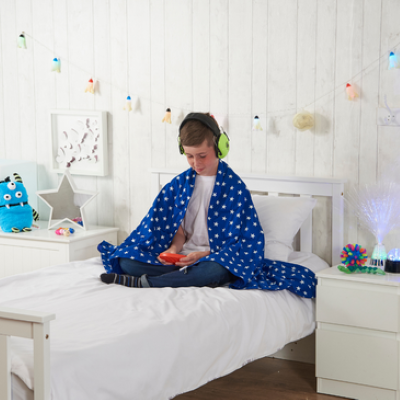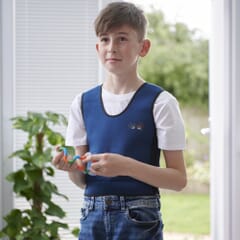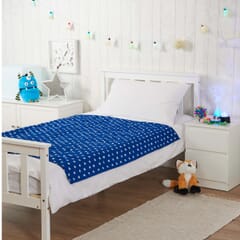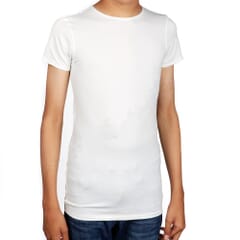Get exclusive deals you won't find anywhere else straight to your inbox.

What Is Weighted Therapy & Proprioception?
What Is Weighted Therapy?
Weighted Therapy is the use of weight to apply deep pressure to the body. The weight and pressure stimulates the proprioceptive sense. This helps those who are “sensory seeking” to relax, focus, and develop a greater awareness of their body.
The benefits of Weighted Therapy are:
• can have a calming effect, promoting a sense of wellbeing
• can improve body awareness
• can improve focus and concentration
• can reduce repetitive sensory-seeking behaviour
• is safe and effective
• is non-invasive and discreet
Weighted Therapy is becoming increasingly recommended in the UK by Occupational Therapists.
It can be used in schools, hospitals and homes and is widely regarded as a safe and effective treatment for sensory integration disorder. It can make an enormous difference to the lives of sufferers and their families.
Many children on the autistic spectrum have sensory processing issues, and many have benefited from the use of weighted therapy products such as weighted blankets and weighted jackets.
The Proprioceptive Sense
The proprioceptive sense is a little-known, yet vital, bodily sense that most of us take completely for granted.
Proprioception is the sense and awareness of our own body’s position and movement. It is our awareness of our body’s orientation in space, and the direction, speed, and extent of the movement of our body and limbs.
This information is detected by sensory receptors in our muscles, ligaments and joints and processed through the central nervous system.
Weighted therapy stimulates the proprioceptive system through the use of deep touch pressure.
Deep Touch Pressure which can be applied by weight (such as a weighted blanket) or by pressure (such as a neoprene vest) works on the principle of applying weight or pressure to provide proprioceptive input.
This input calms and modulates the central nervous system which, in turn, aids the processing of sensory information (Grandin 1992, McClure & Holtz-Yotz 1991).
This calming and modulating has the effect of making the child feel more grounded, and lowers their state of arousal.
A lowered state of arousal then reduces repetitive self-stimulatory behaviours (such as spinning, hand flapping, and rocking) and allows better focus, concentration, and attention.
For more information download our free E-Book






